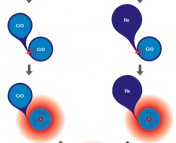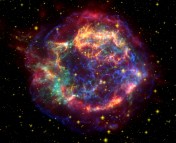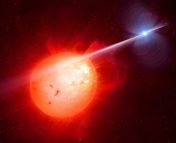Title: The Candidate Progenitor Companion Star of the Type Ib/c SN 2013ge
Authors: Ori D. Fox, Schuyler D. Van Dyk, Benjamin F. Williams, Maria Drout, Emmanouil Zapartas, Nathan Smith, Dan Milisavljevic, Jennifer E. Andrews, K. Azalee Bostroem, Alexei V. Filippenko, Sebastian Gomez, Patrick L. Kelly, S. E. de Mink, Justin Pierel, Armin Rest, Stuart Ryder, Niharika Sravan, Lou Strolger, Qinan Wang, Kathryn E. Weil
First Author’s Institution: Space Telescope Science Institute, Baltimore, Maryland, USA
Status: Published in ApJ Letters [open access]
How do you peel an exploding onion?
Stars are like onions (or ogres) – they have layers. Massive stars typically have outer shells of hydrogen and helium, with heavier elements nestled within. Sometimes, these outer layers get stripped away – this sort of object is called a stripped-envelope star.
What could cause a star to lose its outer layers? One way a star can lose mass is through its stellar winds, which in massive stars can eject material at speeds up to 2000 km/s! However, stellar winds are likely only strong enough in the most massive stars to fully remove a star’s outer envelope. The fraction of supernovae from stripped-envelope stars suggests that another mechanism can cause stars to lose their mass: binaries!
Most stars exist in binary (or multiple) systems. As the primary (more massive) star in a binary system evolves, its companion could accrete the mass from the primary’s outer shells, stripping the primary of its envelope. Eventually, when the primary star dies, it would result in a stripped-envelope supernova, whose spectrum will characteristically lack hydrogen and helium lines. If this sort of system does lead to stripped-envelope supernovae, then we would expect to see surviving companions in their aftermath. Today authors investigate whether a companion star exists in the case of one stripped-envelope supernovae, SN 2013ge.
Evidence for a companion star in the aftermath of SN 2013ge
SN 2013ge was discovered in November 2013. Its lack of hydrogen features and faint helium lines led to its classification as a Type Ib/c supernova. Using observations at the position of SN 2013ge over the years from Hubble Space Telescope (HST), the authors look for a companion source as SN 2013ge dims. In Figure 1, SN 2013ge is still visible in 2016, but fades in observations from 2019 and 2020. A constant source, labeled “Source B” is visible next to the location of SN 2013ge.
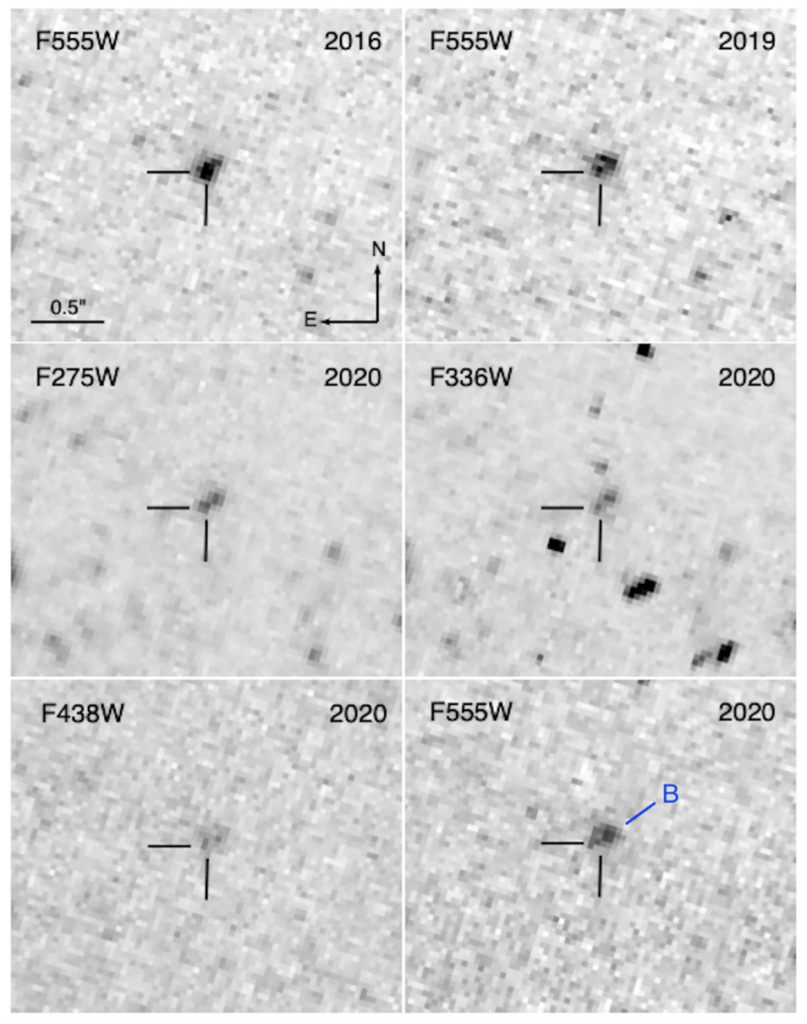
Could Source B be a companion star to the progenitor of SN 2013ge? By fitting photometry from SN 2013ge in 2020 with stellar models (Figure 2), the authors find that it most closely resembles a blue supergiant (B5 I) star. What’s more, its color indicates that it is a bit too red to be on the main sequence. The authors suggest that perhaps the transfer of mass from the primary star onto a companion disrupted the delicate thermodynamic balance of the companion star, causing the companion to expand and cool off.
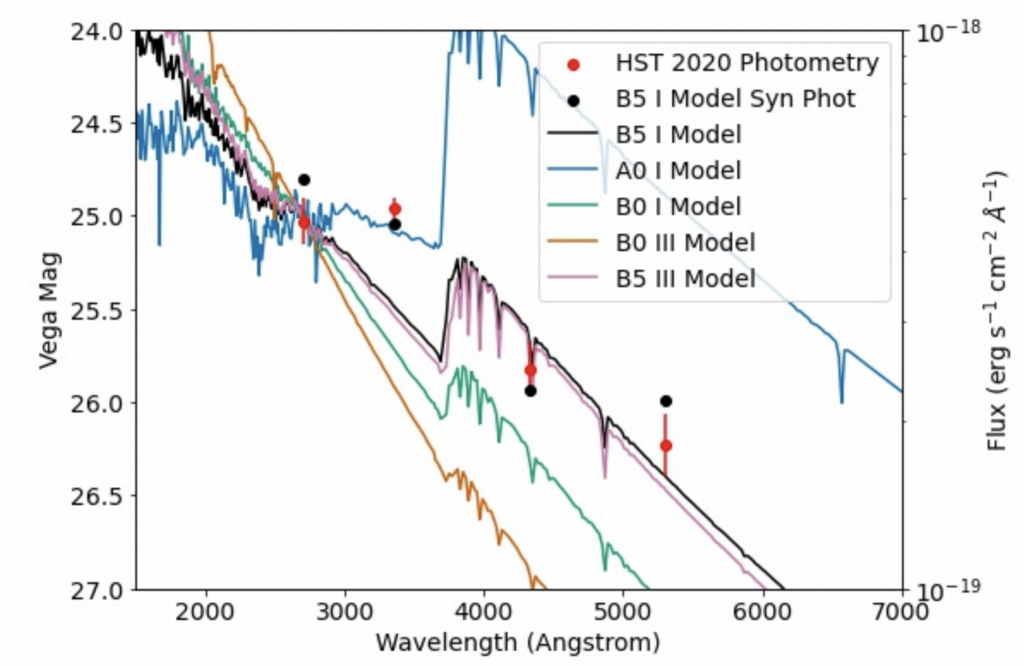
The source detected at the site of SN 2013ge could also result from shocks in the circumstellar medium caused by the supernova event. However, the SED of SN 2013ge from 2020 seen in Figure 2 has a stronger blue component relative to the typical spectra observed from shock interactions. Additional UV photometry over time that would be sensitive to the emission from a blue companion could further rule out a shock interaction. If the optical component of SN 2013ge continues to fade while the UV emission remains constant, this would provide solid evidence that a companion star is present.
Another possibility is that Source B could be an unresolved cluster of stars masquerading as a companion to the progenitor of SN 2013ge. This explanation is unlikely though – after taking into account the physical size of such a cluster and the distance to SN 2013ge, the authors conclude that the chance of Source B being an unresolved cluster is less than 10%.
If Source B is from a companion star, this would be the first direct detection of a companion star survivor in the aftermath of a stripped-envelope supernova! Some models predict that the majority of these supernovae should have a surviving companion star, so there is likely a large population of these companions left to be discovered. By finding and studying companion stars in stripped-envelope supernovae, we can better constrain stellar evolution models for binaries.
Edited by Katya Gozman
Featured image credit: NASA, ESA, Leah Hustak (STScI)

